2015 | Rose made of white gauze bandages, MDF plywood and synthetic resin adhesive | Rose (width x depth x height): 50 x 6 x 60 in. / 127 x 15.2 x 152.4 cm. | Approximate display: 50 x 6 x 93 in. / 127 x 15.2 x 236.2 cm. | Photos: LAMO, Leh
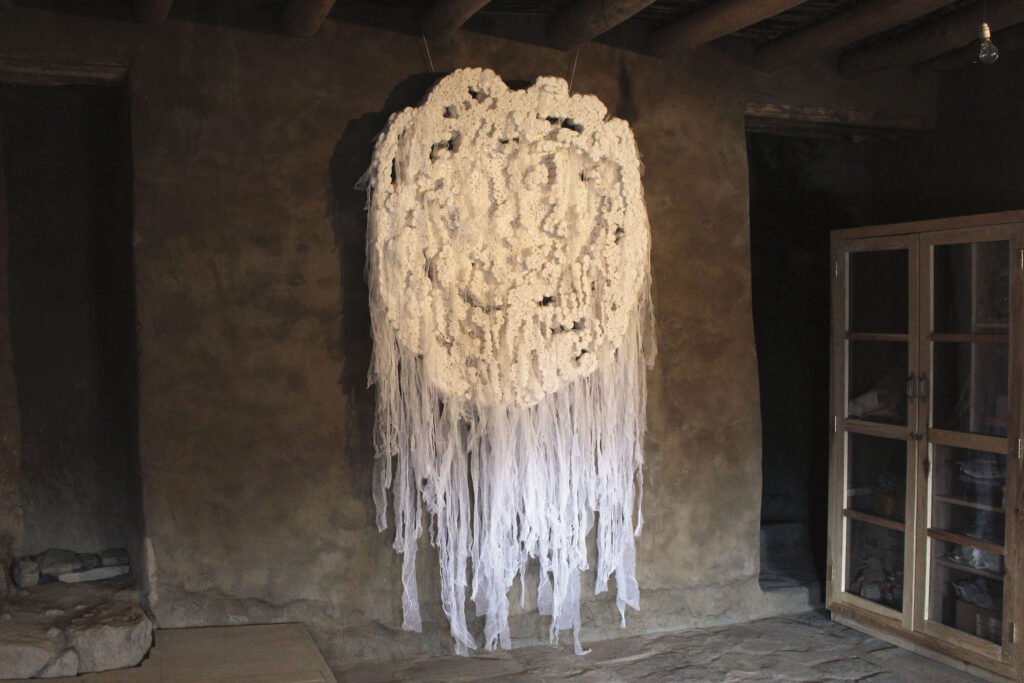
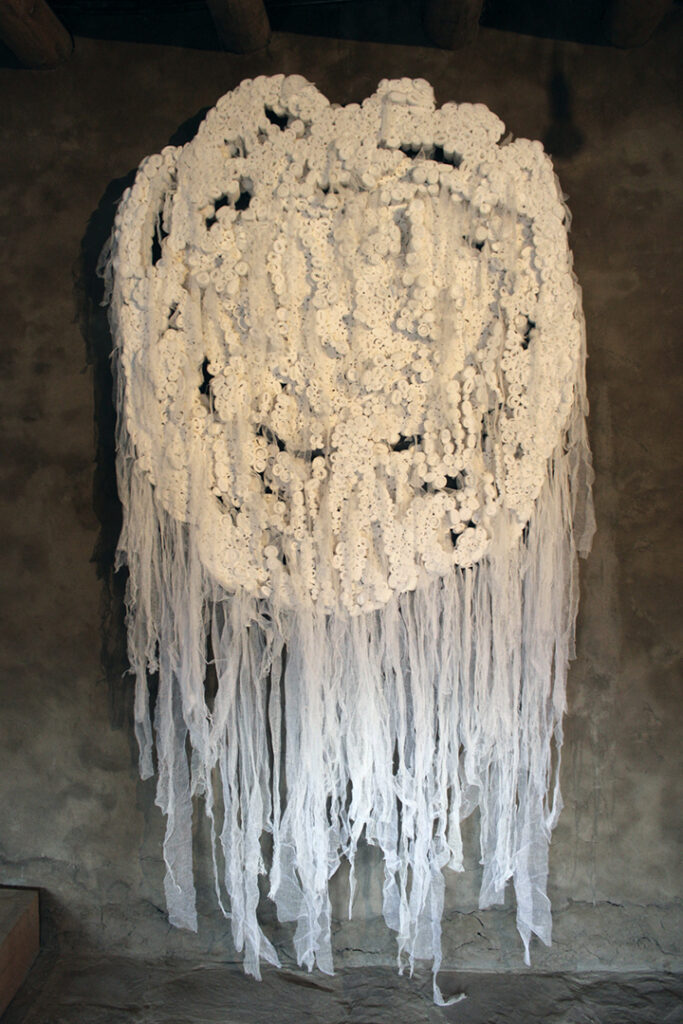
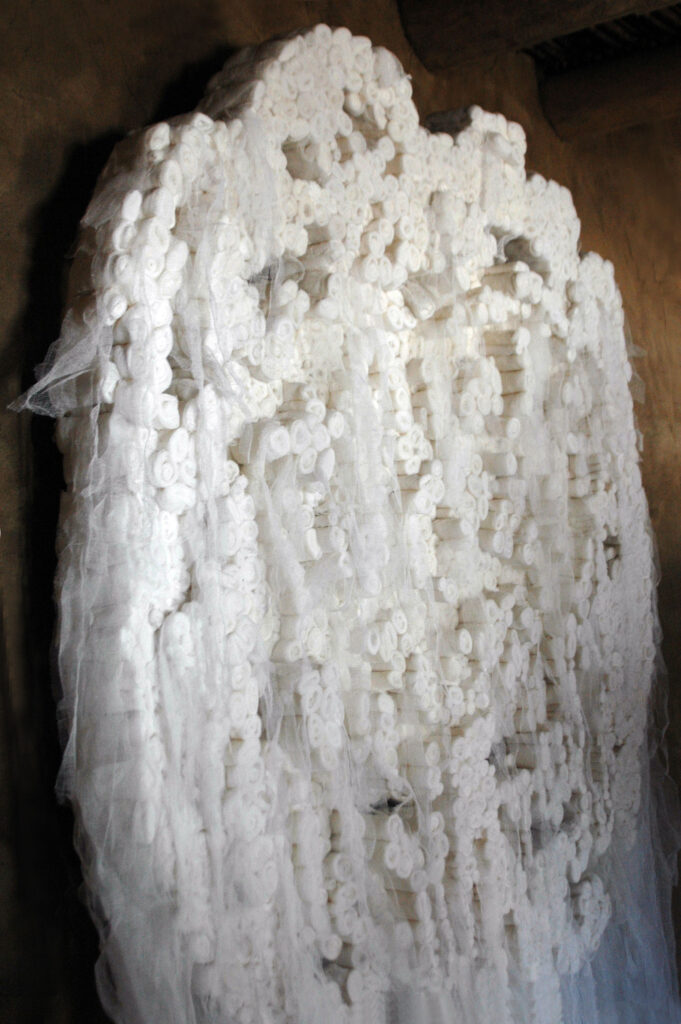
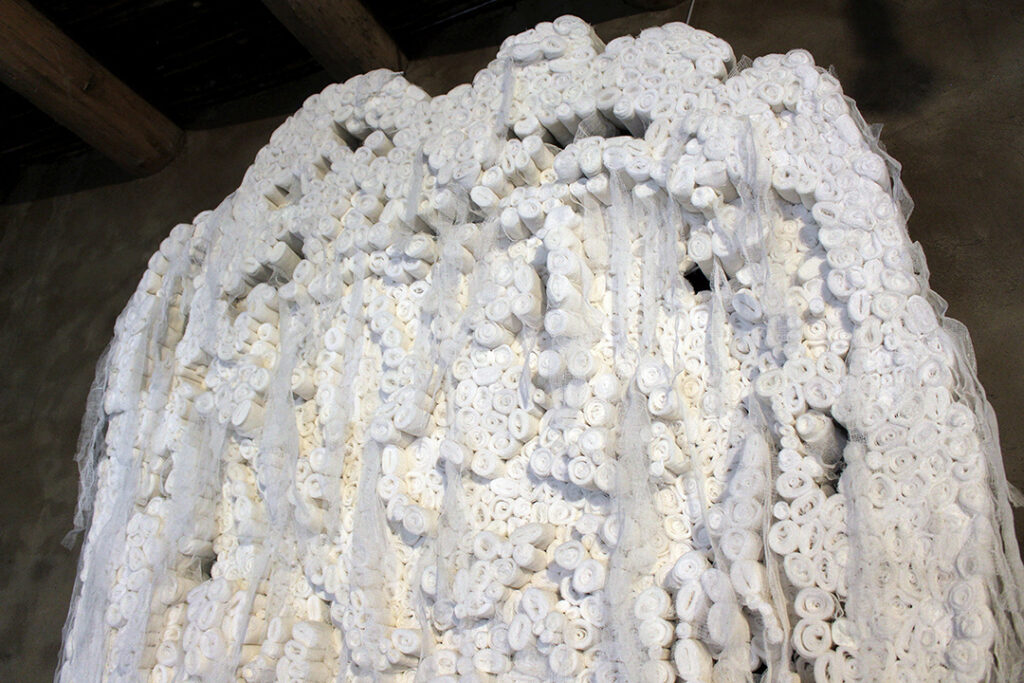
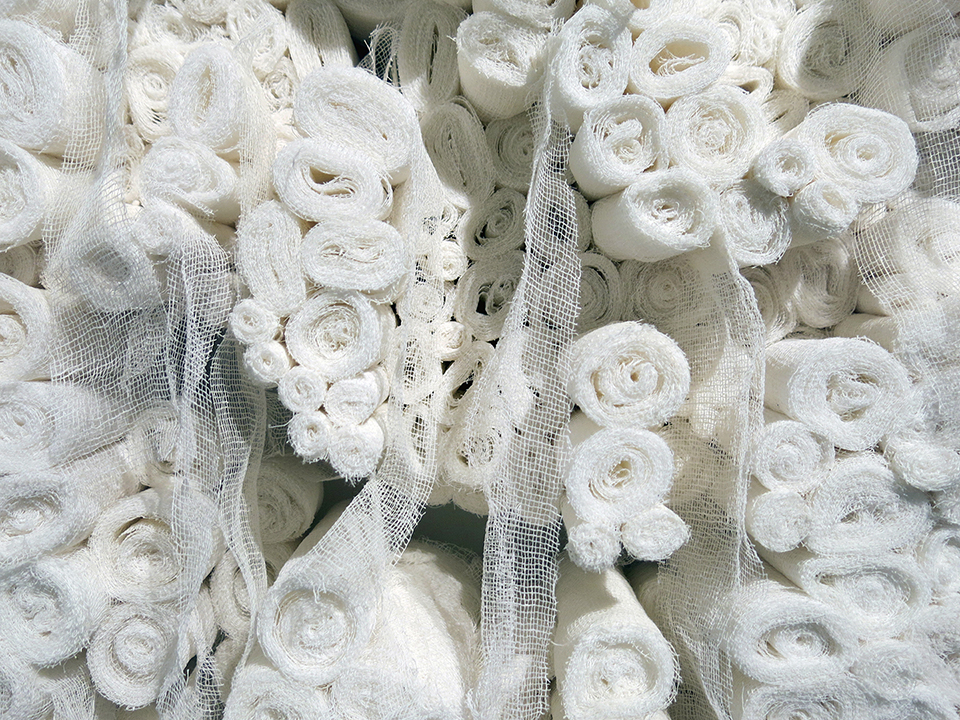
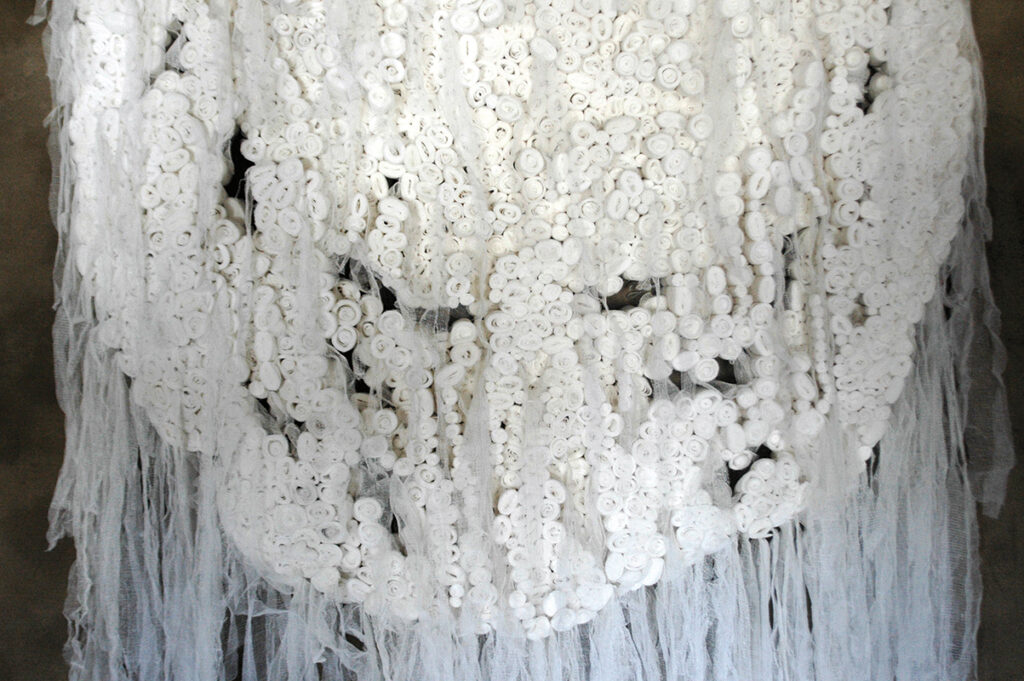
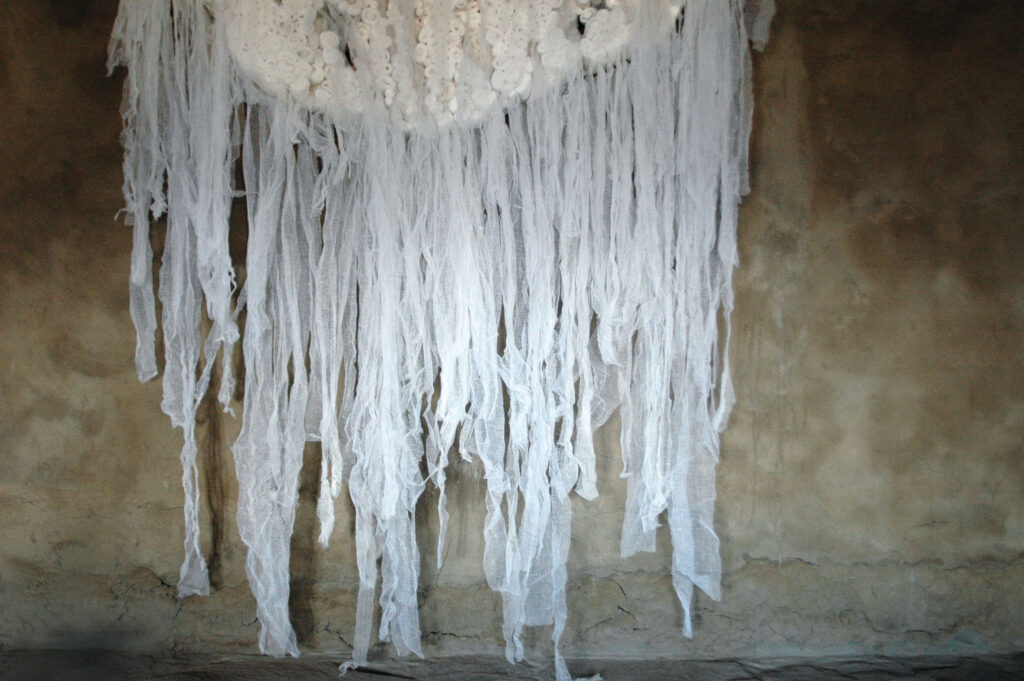
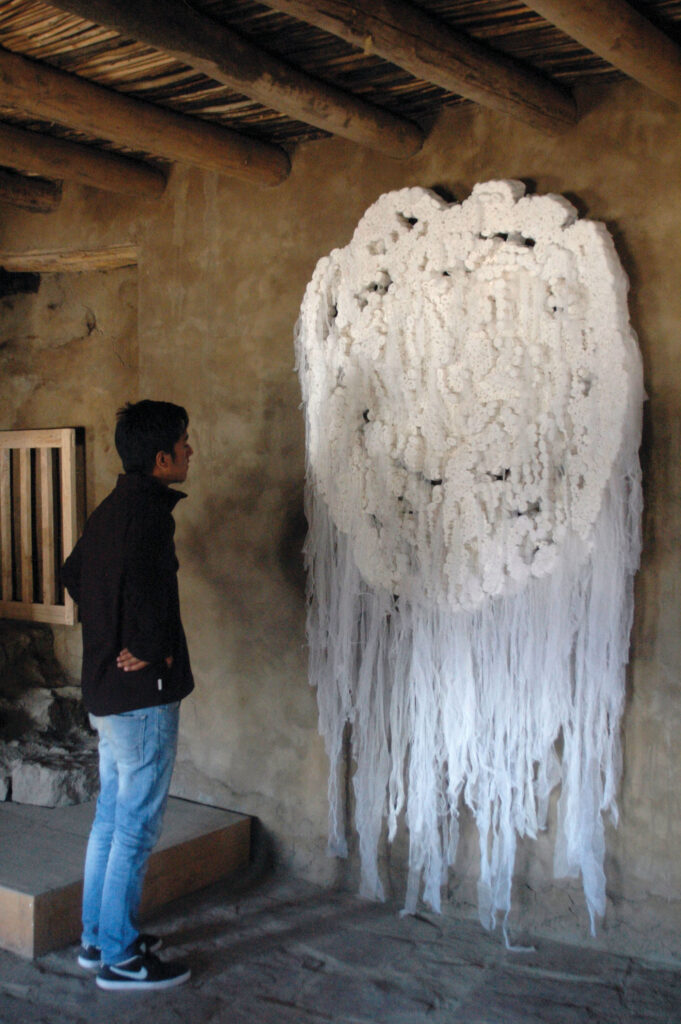
The symbol of the rose has been immortalized in literature and history from ancient mythology to modern times. The Rose #1, was initially inspired by the painting, ‘Untitled (Blue Roses)’, 2008, by the American artist, Cy Twombly (1928-2011). The work is one of eleven large-scale rose paintings, that form a two-part series. ‘Untitled (Blue Roses)’, includes multi-layered swirls and drips of vibrant blue and purple colours. It also includes a two-columned excerpt, inscribed and layered like a palimpsest from ‘Borrowed Time’, a poem by the Austrian writer Ingeborg Bachmann.
The artist’s work focuses on the word ‘Siachen’, which is Balti, a Tibetan language spoken in the Baltistan Division in Gilgit-Baltistan, a part of Pakistan which adjoins parts of Ladakh in India. The word, ‘sia’, refers to the genera of roses, which grow widely in the region and ‘chen’, refers to any object found in abundance. ‘Siachen’ is thus a land of many roses. However, this terrain is mainly known for the endless conflict between India and Pakistan, where many lives have been sacrificed for national pride. The Rose #1, is constructed of white gauze bandages of various sizes; grouped next to each other, to form one of the four roses by Twombly.
The fragile white gauze bandages, collectively placed, echo the shape of the brushstrokes, drips and fingerprints of the colossal flower by Twombly. The bandages transform the meaning of this work, to one of healing and protection under the soldiers’ collective solidarity.